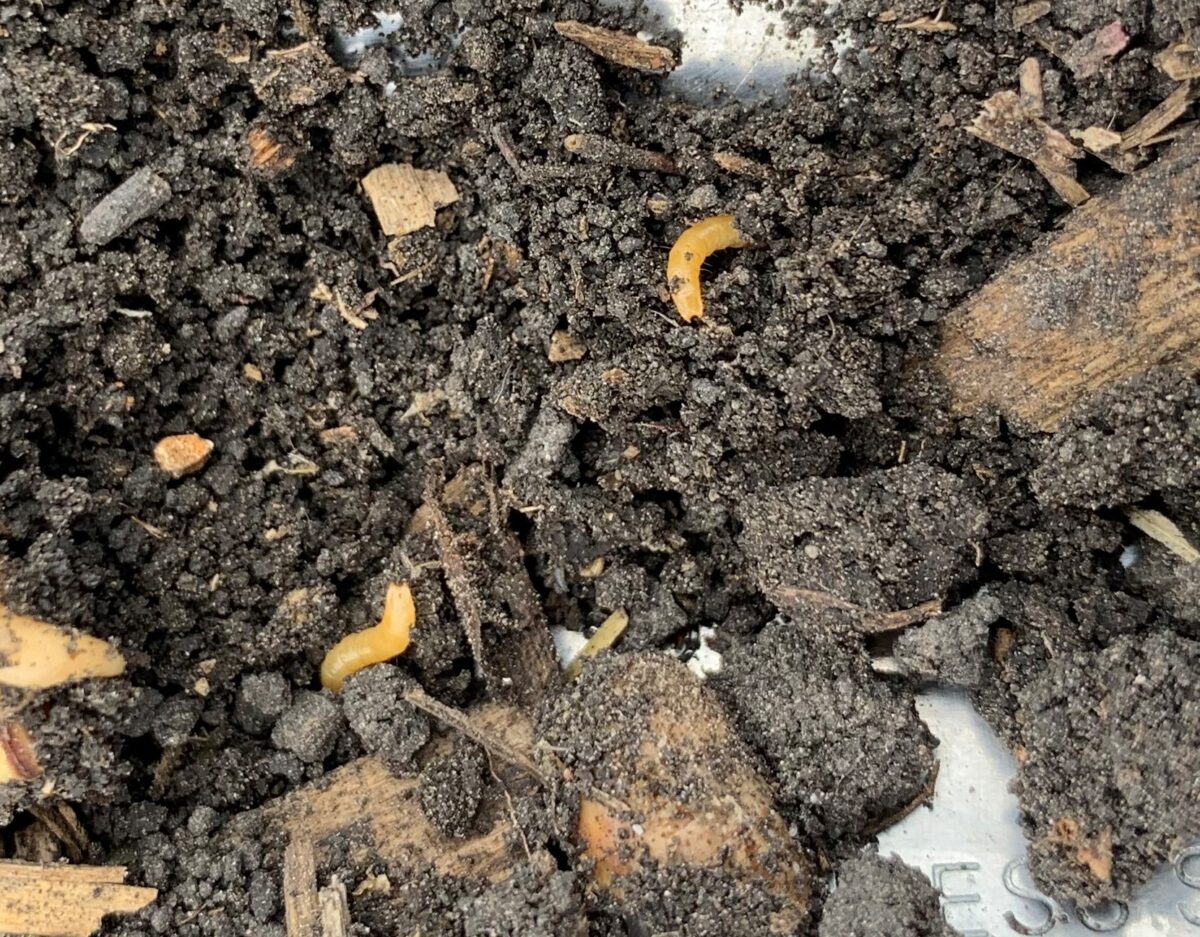Brown Stink Bug (Euschistus servus) Green Stink Bug (Chinavia hilaris) Brown Marmorated Stink Bug(Halyomorpha halys) Description Three types of stink bugs can injure beans: green stink bugs, brown stink bugs and brown marmorated stink bugs. Green stink bug adults are large — about 2 cm (0.75 in.) long — light-green, shield shaped bugs. Brown stink…Continue readingStink Bugs
Author: Tracey Baute
Field Crop Entomologist, OMAFRA
Photo credit: Megan Bourns Wireworm (Limonius spp., Agriotes spp., Hemicrepidius spp., and others) Crops at risk of wireworm damage are primarily corn and cereals, and occasionally/rarely soybeans, forages, dry edible beans and canola. Description Wireworms are larvae that are 2–40 mm (0.1–1.6 in) long, cylindrical, copper-brown-coloured and hardened with a distinct fat head. Adult wireworms are…Continue readingWireworm
Mexican Bean Beetle
Photo credit: Tracey Baute Mexican Bean Beetle (Epilachna varivestis) Description Mexican bean beetle infestations are rare in Ontario. Mexican bean beetle is the only member of the lady beetle family in Ontario that feeds on plants. All the other lady beetles are beneficial predacious insects. The adult beetles are oval in shape, approximately 6 mm (0.25…Continue readingMexican Bean Beetle
European Corn Borer
Photo credit: Tracey Baute European Corn Borer (Ostrinia nubilalis) Description European corn borer (ECB) egg masses are fat, creamy white and layered over each other, making the egg mass appear similar to fish scales. Mature larvae are creamy white to pale grey with two small spots per abdominal segment, approximately 2.5 cm (1 in.) in length…Continue readingEuropean Corn Borer
Assessing Defoliation Research conducted at the University of Guelph, Ridgetown Campus, indicates that prior to flowering, dry edible beans are able to tolerate up to 50% leaf loss with minimal loss in final yield. Complete defoliation prior to flowering delayed maturity by 30 days but lower levels of defoliation did not delay maturity. At later…Continue readingThresholds for Defoliating and Pod Feeding Insects
Red-Headed Flea Beetle
Red-Headed Flea Beetle (Systena frontalis) Description Adults are shiny black beetles, approximately 3–6 mm in length with large hind legs used for jumping. Their body tapers towards the head which is red-orange in colour and gives them their name. Their small white larvae live in the soil and go unnoticed. Life Cycle Little information is…Continue readingRed-Headed Flea Beetle
Western Bean Cutworm
Western Bean Cutworm (Striacosta albicosta) Description Western bean cutworm (WBC) larvae are tan to pink in colour. When they first emerge from their eggs, they resemble European corn borer with dark heads and beige bodies. Third instar larvae begin to appear like true armyworm, with distinct stripes along their bodies, but lack bands on their…Continue readingWestern Bean Cutworm
Protecting Pollinators and Beneficials
Honeybees, native bee species and other pollinating insects are important pollinators for many Ontario crops. Beneficial insects also play an important role in helping to keep pest populations below threshold. Protecting pollinators and beneficial insects requires careful management of insecticide use. Follow integrated pest management practices and use insecticides only when necessary. This approach can…Continue readingProtecting Pollinators and Beneficials
Promoting and Protecting Natural Enemies
There is an increased interest in “conservation biological control,” which involves managing the agricultural landscape to promote natural enemies and help suppress pest infestations – see OMAFRA Agronomy Guide for Field Crops for descriptions of natural enemies. Though much research is still needed in this area, there is evidence of some successful practices that can…Continue readingPromoting and Protecting Natural Enemies
Spider Mite
Two-Spotted Spider Mite (Tetranychus urticae) Description The adult mite is barely visible to the naked eye, roughly 0.5–1.0 mm in length, rounded, eight-legged and yellowish-brown with two dark spots on the sides of the abdomen. Nymphs look similar to the adults but are smaller. The larvae have six legs instead of eight. Overwintering females are orange/red.…Continue readingSpider Mite









